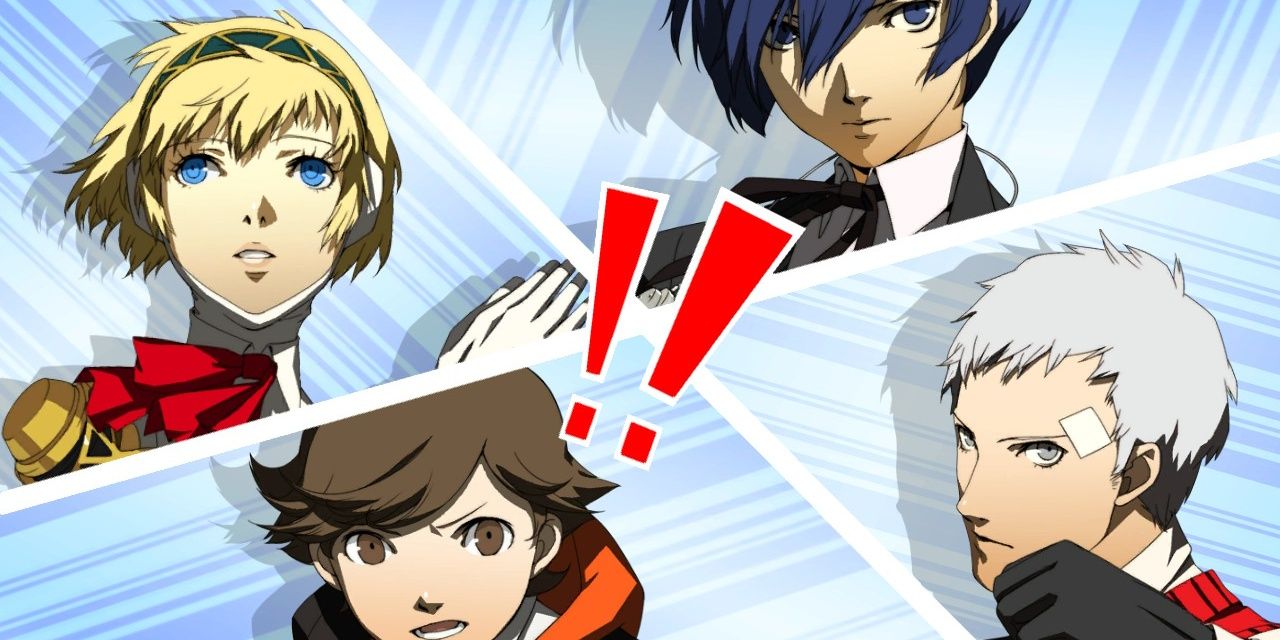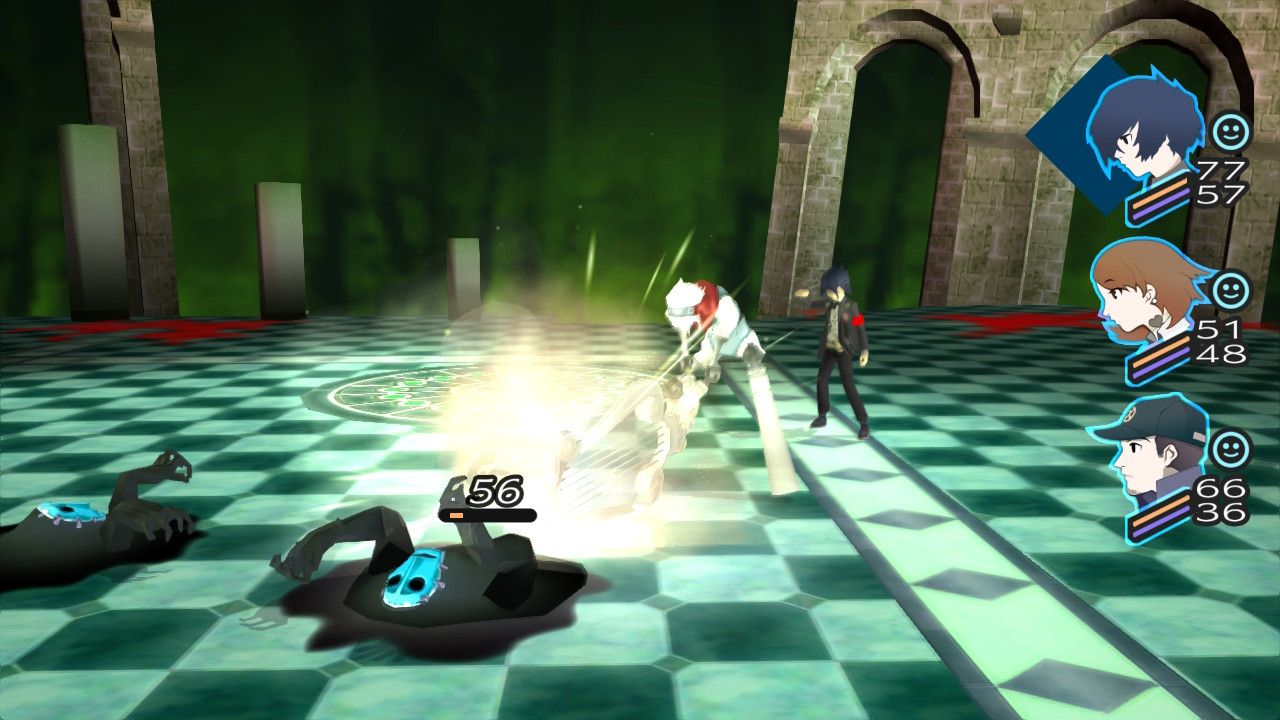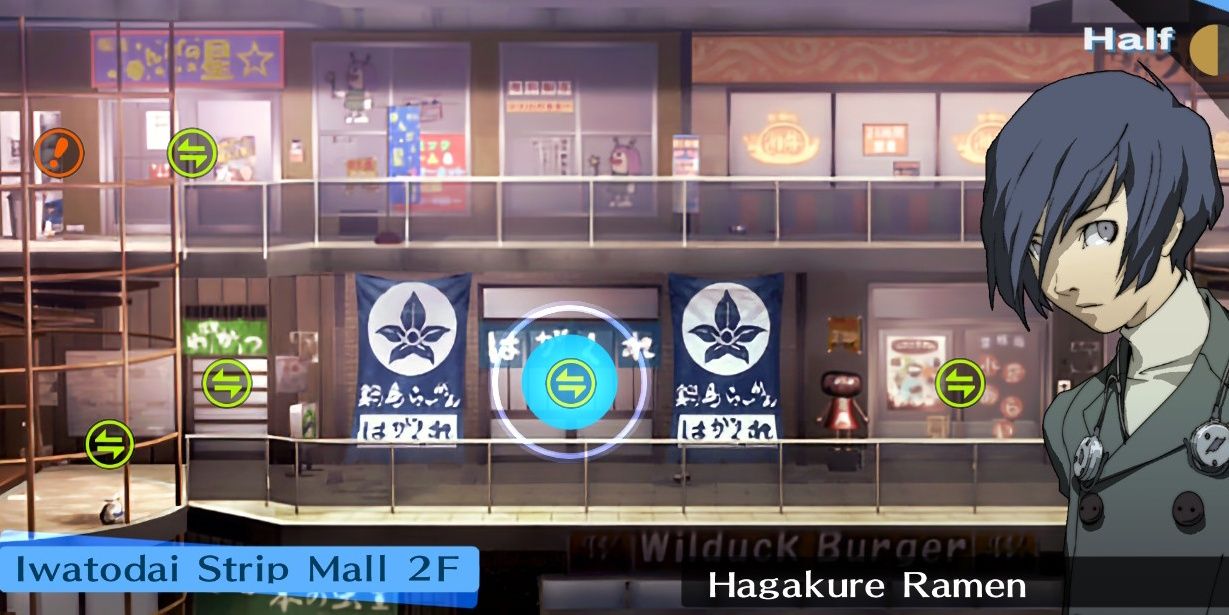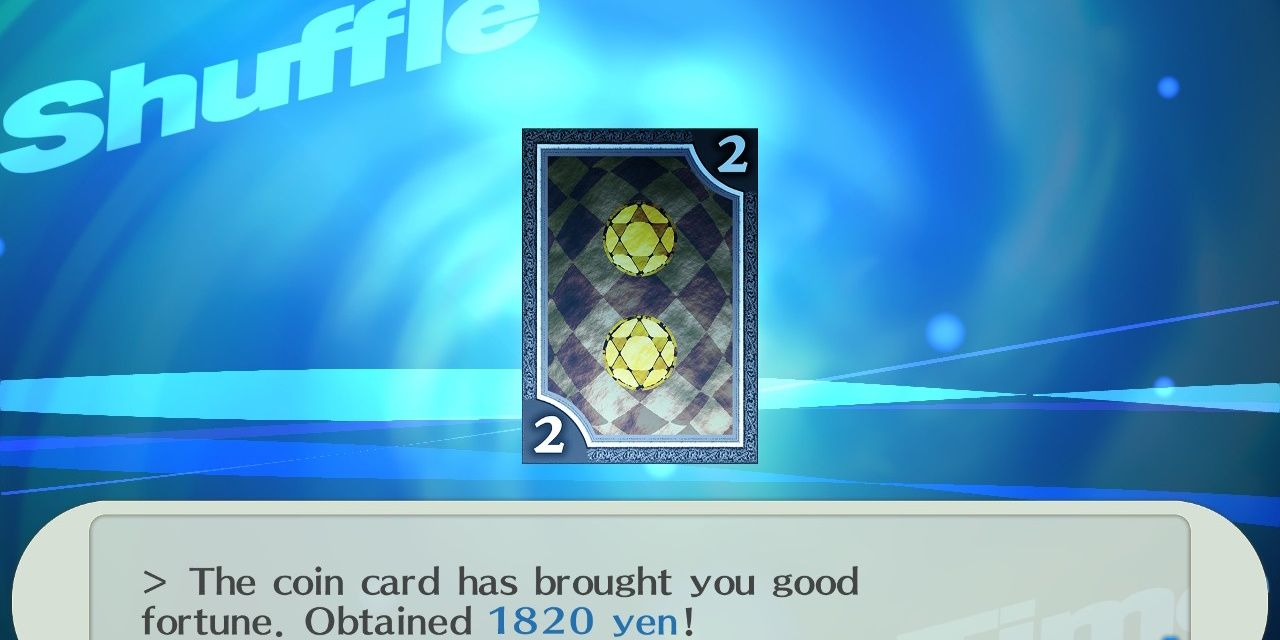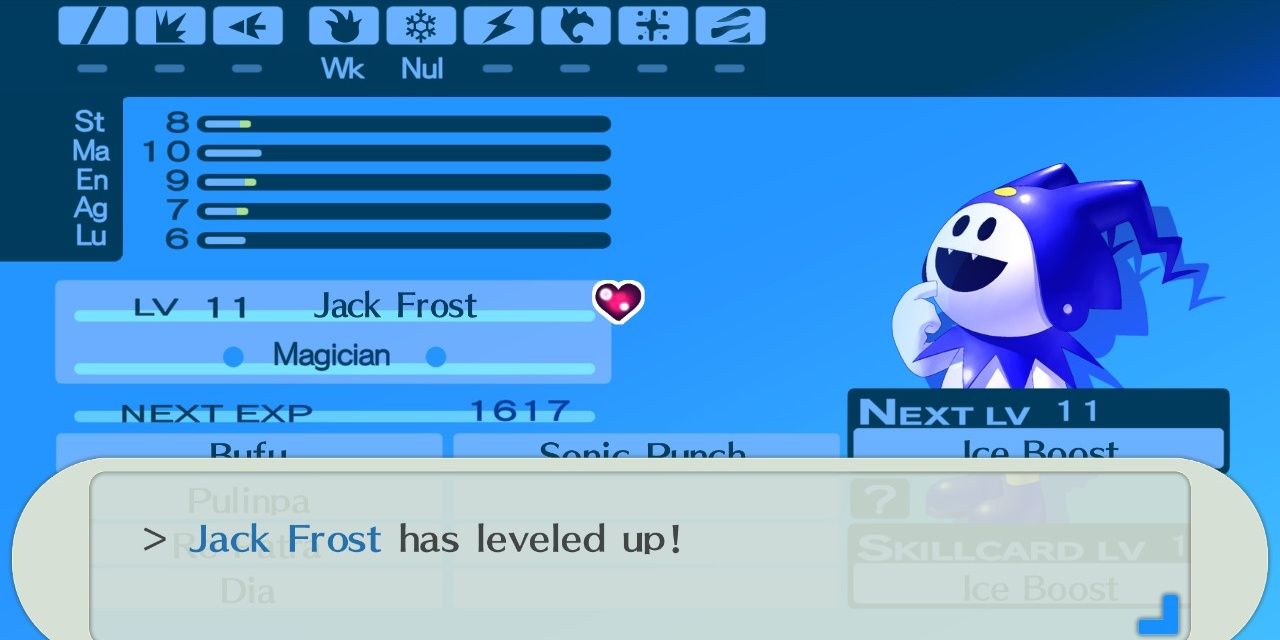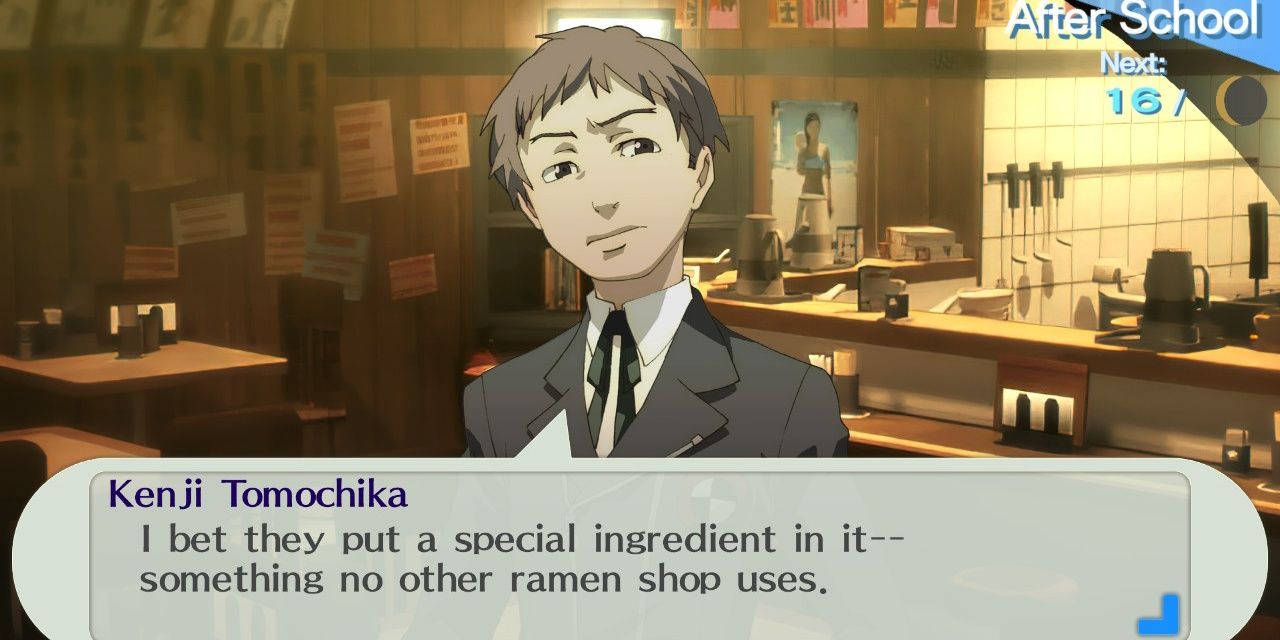| Our Score | 8.5/10 |
| The Good | New remastered graphics, "slice of life"/RPG-fighting balance, captivating plot |
| The Bad | Repetitive dungeon gameplay gets tedious at times, weak handling of in-game relationships |
| Release Date | January 19, 2023 |
| Developed By | Atlas |
| Available On | Digital: Xbox Game Pass, Xbox Series X|S, Xbox One, Windows, Steam, PlayStation 4, Switch |
| Reviewed On | Nintendo Switch |
When I rented Persona 3 at a Blockbuster in 2007, it was a welcome contrast to my actual junior high experience. Just a few months prior, I myself was a junior high school student knee-deep in homework, hormones and hair gel (don’t ask). Atlas’ incredibly entertaining JRPG allowed me to escape the confines of my own boring scholastic life and live vicariously through my character.
Naturally, I’ve gotten older and grayer since I first popped the Persona 3 disc in my Playstation 2, but, after all these years, the idea of increasing my intellect by eating ramen or gaining courage by belting out karaoke tunes is still incredibly appealing. That being said, I was thrilled at the chance to play the Persona 3 Portable remaster.
At first glance, it’s like a refreshing yet familiar encounter with an old war buddy who’s lost weight and looks much better than you—a trimmer, more attractive version of the original with noticeable aesthetic differences and challenges. The first major change was clear from the title screen: in addition to the standard male protagonist, you have the option to play as a female. This progressive addition will no doubt open up an entirely new world of different encounters with the inhabitants of Iwatodai, but moreover may be a much more appealing option for girl gamers looking for relatable situations while playing the game.
However, without a shred of forethought or sexism, I opted for my tried-and-true dude counterpart instead. In no time, the game dropped me into the semi-fictional world of Iwatodai, Japan, circa 2009, to meet with my beloved crew and their backstories: the stoic Akihiko, class president Mitsuru, girly-girl Yukari, lovable idiot Junpei and more, fighting by my side again. Within the first ten minutes of the game, I was met with another surprise: Persona 3 Portable was entirely anime-free.
The original Persona 3 incorporated numerous animated cutscenes as a storytelling technique, but there are none to be found here. Instead, the anime sequences have been replaced by still character avatars and text that pop up on-screen and tell the story through a type of pantomime. Granted, animation is always a dynamic medium to convey emotion in a story, but the text-based technique works here as it allows the player to control the speed at which they choose to button-tap through exchanges, particularly drawn out emotional ones.
Suffice it to say, the graphics have come a long way since its original release. Each character and location is as crisp and vivid as the cherry blossoms that surround Gekkoukan High School, and within minutes, the plot draped over me again like an old t-shirt: an exclusive group of individuals (mostly high schoolers) are able to summon Personas (internal warriors) in order to overcome the Shadows (manifestations of the worst parts of humanity) and save mankind. Like a gamified manifestation of Carl Jung’s psychological theory about the masks we wear and our unchecked unconsciousness (but, y'know, way less boring).
As student at Gekkoukan High, you’re expected to regularly attend school and pass your equally regular exams (this is actually an educational takeaway from the game), but also to accrue Charm, Courage and Academic points along the way to alter the plot of the game and open up more possibilities. This is perhaps my favorite part of the game. By accessing the user-friendly Town Map, you’re able to explore and interact in several of Iwatodai’s finest locales: Paulownia Mall, Iwatodai Strip Mall, Naganaki Shrine, etc. While out and about, you can easily spend boatloads of time—and cash—on things like upgrading your weapons, grubbing on some delicious ramen, catching a movie, sipping on mojo-enhancing tea, or simply feeding stray cats. Apart from the mall though, the hottest spot in town is Tartarus.
For those unfamiliar, Tartarus is the eerie tower-like structure that replaces Gekkoukan High School at the Dark Hour every midnight. It’s also a drag. In order to boost and upgrade your Personas, you pretty much have to trudge and battle your way through its Shadow-filled halls nightly. As the leader of the Tartarus strike force, you lead a team of four further and further up the maze-like tower, cutting down Shadows and a mini-boss every 4 or 5 floors.
The difficulty of the Shadows increases incrementally the higher up you progress, which can really turn the battles into protracted encounters sometimes taking 10 or 15 minutes (not to mention 15-20 for boss fights). I actually noted the amount of time I spent at school versus the amount of time I spent in that hellhole and Tartarus won by a solid margin.
It was really the one location in the game that I wound up avoiding until literally all of my compatriots began to blatantly state that we should go to Tartarus, like soon. Yeah, I get it, but it'll just be more of the same "fight-rinse-repeat" for the next, I dunno, a couple of hours. This isn't to say that I didn't take our mission seriously. Ultimately, the objective is to keep winding your way up the seemingly endless floors—there are over 250—until you reach the top, where you’ll face the big death boss, Nyx. As if sensing my future frustration, the game attempted to compensate and placate me with goodies after each battle.
After fighting and defeating a Shadow in Tartarus, a card-shuffle challenge will give you the chance to earn a reward for your hard work. These can range between weapons, upgrades, HP or Japanese yen. Earlier in the game, I mainly focused on racking up yen, mostly because, as an adult, I have the unfortunate and practical knowledge that money is a necessary means to an end and doesn’t grow on trees.
For almost 90% of the game, I just let my team do their own thing automatically during the turn-based fighting sequences against bosses and Shadows in Tartarus, but soon, this became monotonous to a degree that I tuned out completely during the fights.
It was only during the final boss fight with Nyx that I discovered the beauty of actually controlling each individual member, wherein I had more agency over the battle and took more of a vested interest in the outcome. It also came in incredibly handy with bosses that deflected certain types of attacks that my team would use by default. For example, my preferred team consisted of Aegis (my ever-faithful android warrior), Ken (the boy prodigy) Akihiko and me. In order to maximize our chances of winning—and hasten the victory—I would take the reins and use Aegis', Akihiko' and my turns for attacks appropriate to the enemy's weaknesses, while deploying Ken's exemplary healing powers to boost our HP after each round. Once I discovered this helpful method, the game improved exponentially and the tedium of Tartarus dissipated, at least for a while.
Coincidentally, if either the names Nyx or Tartarus ring a bell, then you obviously know your Greek mythology. Tartarus is the proverbial “hell” that exists for the lowest of the low in Hades and, funnily enough, P3P is riddled with all forms of folklore that ranges from Japanese and Greek culture to American and even Norse. For example, my Persona of choice for the majority of the game was the adorable—yet imaginary—Jack Frost and his Sonic Punch attack.
When you’re not fighting in Tartarus for a change, the world of P3P is full of possibility and more exciting than any junior high has a right to be. By simply joining a music club, you establish links that create new Personas. A study session in the library greatly enhances your Academics, thus enabling you to pass your exams with ease. But perhaps the most crucial method make progress is to spend time with your fellow classmates. A bright red exclamation point will hover over an avatar prompting you to interact with them and then choose the right response to what they suggest.
Each character and location is as crisp and vivid as the cherry blossoms that surround Gekkoukan High School
This, in turn, will eventually produce an Arcana, or Tarot card, that can be used to summon a mighty Persona. As a blue-haired androgynous teen with too much money, I pretty much said “yes” to every suggestion, which, while it earned many a Persona, it also led to a series of multiple relationships with almost every female in my social sphere, for better or worse.
One small gripe is that once you reach the highest level possible with an individual, the game seems to forget they ever existed. For example, my buddy Kenji and I used to hang out after school, eat ramen and talk about his ambitious plan to woo one of Gekkoukan High's teachers (the scandal!), but once I gained his absolute trust and became his "best" friend, the game froze our friendship and had me move on to other peers without giving me anymore bro time with Kenji.
Persona 3 Portable was a blast and truly lived up to its name. I played it everywhere: while waiting for McDonald's in the drive-thru, in the bath, in my kid’s school parking lot and during a FaceTime call. But it wasn’t just the game’s new-found mobility that kept me glued to the screen. Playing P3 as an adult made me pay more attention to things that were definitely off my radar 15 years ago. For one, the often humorous dialogue among the ridiculously immature teachers actually had me laughing. Moreover, I soaked up every second of the out-of-school activities, like simply getting lunch, or working part-time at a movie theater. These somewhat banal tasks helped to balance out the pressure to constantly fight in the tortured halls of Tartarus.
Jung’s theory aside, Persona 3 is all about the time we have, how we choose to spend it and who we choose to spend it with. In this light, the game’s true mechanics shine. The relationships that we forge can—and this is probably true in life—affect our ultimate outcome. And time? Well, it’s hard to think of a better way to spend 50+ hours than getting points for scarfing down takoyaki and fighting bad guys.

